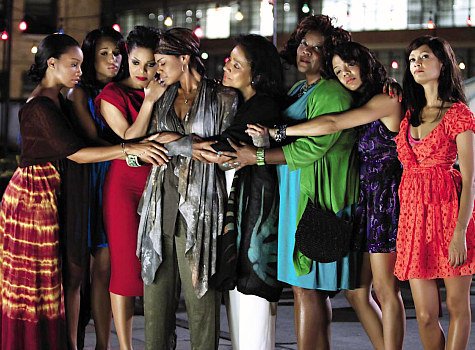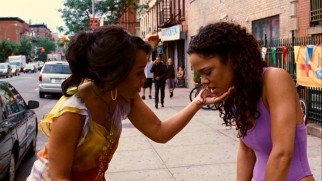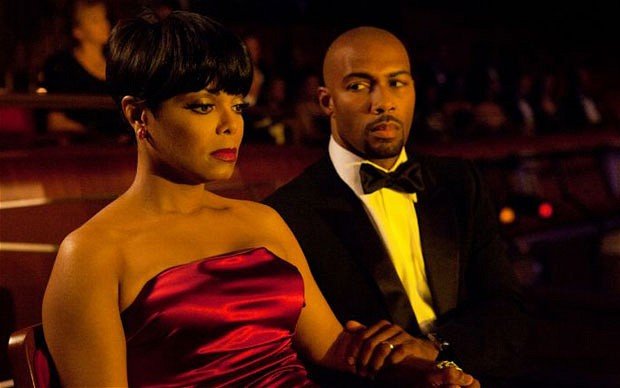A Feminist and Postmordernist reading of Tyler Perry's For Colored Girls.
Tyler Perry’s For colored girls depicts the characteristics of Feminism and postmodernism through the presentation of characters, the thematic exploration, use of dialogue and symbols. The film is a form of pastiche, a feature of postmodernism as the women imitate the lives of black American women ( through their notions and actions) who need to assert their independence and freedom.

As a Feminist work, it constructs the truth about women’s oppression. In other to call for equality or speak out against the injustices and discrimination the female gender is faced with, Feminists concern themselves with firstly representing the truth about women’s situation, starting out first with the acceptance that women are oppressed, their rights are violated, with the ultimate aim of orienting women about what should be and what should not be.
Hence, the movie concerns itself with representing the trauma and betrayal the women pass through. It documents their psychological and verbal abuse in the hands of trusted men.
In the movie each woman breaks into some sort of trance, literary scholars have referred to these emotional outbursts as "choral poems"made even more attractive with literary features such as parallelism, repetitions and most especially with the use of language whose sounds represent what they mean that accompanied the choral.
Yasmine, the dance teacher's delivery of her choral poem leaves us meditating on the modern woman's predicament. The dance gives a vivid presentation of slavery and solitude.
The women through their choral poems reveal the undignifying position ascribed to the female sexuality who are perceived as objects of sex, what makes the movie stands out is the psychological and semantic use of colors to depict the women.
Nyla, the lady in purple embodies teenage innocence and youthful escapades. She suffers unwanted pregnancy, risk abortion in the hands of a psycho which almost claims her life.

What strikes the feminist reader isn't the cinematic presentation of the abortion scene or the use of close-up shots and extreme close-up shot to depict Nyla's discomfort. Neither is it the use of dark light or the effective use of panning as a film technique in the scene but rather what pops up the whole time in the feminist's mind is the painstaking absence of Nyla's boyfriend.
Thus, Tyler perry is successful in stirring some kind of awareness in the young female viewer. She is angry, She becomes bitter about Nyla's situation and in the long run wants some kind of revenge, she wants to do this for Nyla or for herself but the motive is clear;
Why should she bear the brunt of a sexual escapade that involved two?
Yasmine, the lady in yellow is savagely raped by a friend after establishing a meaningful friendship and trust. She speaks agaisnt the betrayal women face;
“women relinquish all their personal right for a man who could apparently be a rapist”.
Juanita, lady in green constantly has to make a choice between staying and leaving her relationship. She plays a fool for love, acceptinh her lover only to get ditched again and again till she finally realizes she shouldn't treat herself that way.
She gives a terrific delivery on how“somebody almost ran away with all of my stuff”. Stuff being a methaphor for her mental, physical, emotional, financial and psychological well-being.
Crystal, the lady in brown has to deal with a man who has problem containing his Ego and jealousy. Sometimes the viewer can't helo wondering if he he is mentally deranged and of course he demonstrates his intentional malady when he throws down his kids from the top of the building as a result of crystal's refusal to continue her oppressive marriage with him.
Joe, Janet Jackson the Lady in red suffers an unrequited love only to find out her husband is homosexual for instance, he rewards her faithfulness love and loyalty with human immunodeficiency virus.
Feminist work is concerned with finding out and redefining what it means to be a woman and no wonder at the end of the movie, the women succeed in redefining themselves and setting goals after the various abuses they go through.
The women all struggle for equality and call out for a fair and just treatment by their counterpart while representing their reality.
Juanita continuously calls for Frank’s change of heart to love her and be faithful, while Crystal refuses to marry a man who constantly abuses her.
Hence, there is a redefinition of what it means to be a woman, A woman is not one who would just sit and does nothing about her situation, she must speak and decry the injusticeshe faces,
Thangie says “You men and your double standards, you can do it but a woman cant?” Hence, she tries to justify her act of obsession with sex which she initially sees as a means of having victory over men as a result of her past abuse, However, this notion of hers is changed when she encounters Gilda and sees the realities about other women. Hence, women must come and support each other.
As a postmodernist work, the movie also debunks the idea of subjectivity such that the story is one in which any woman, black, coloured or white could relate to. The idea of collectivism flows through all the poem and this is even portrayed through the choral poem which starts with Yasmine at the beginning and eventually boils down to other women who expose the dark phrases of womanhood, the joy and need for unity and after this the voices of the women come together to recite the title of the movie.
At the end of the movie, the women see themselves responsible for crystal’s tragedy, Joe blames herself, Kelly laments that she should have taken the kids away, thus, the idea of individualism is debunked.
Also, Joe eventually melts from her high horse and joins the rest of the women to fight a common cause.
In the choral poem “I’m sorry” at the end of the movie, the women can all relate to it. The play generalizes across women, their hopes and dreams and the desire to finally put themselves first and bear the consequences.
Thangie eventually realizes she can “have fun” without a man. Jasmine rises above her hurtful past(rape) and continues with her dance classes, seeing to the progress of her girls.
WORKS CITED
For Colored Girls. Dir. Tyler Perry. 2010. Film.
Jameson Fredric. “Post Modernism and Consumer Society”: Postmodernism and its Discontents. Ed. Ann Kaplan. London: Verso, 1998.
Hello @mimy, thank you for sharing this creative work! We just stopped by to say that you've been upvoted by the @creativecrypto magazine. The Creative Crypto is all about art on the blockchain and learning from creatives like you. Looking forward to crossing paths again soon. Steem on!